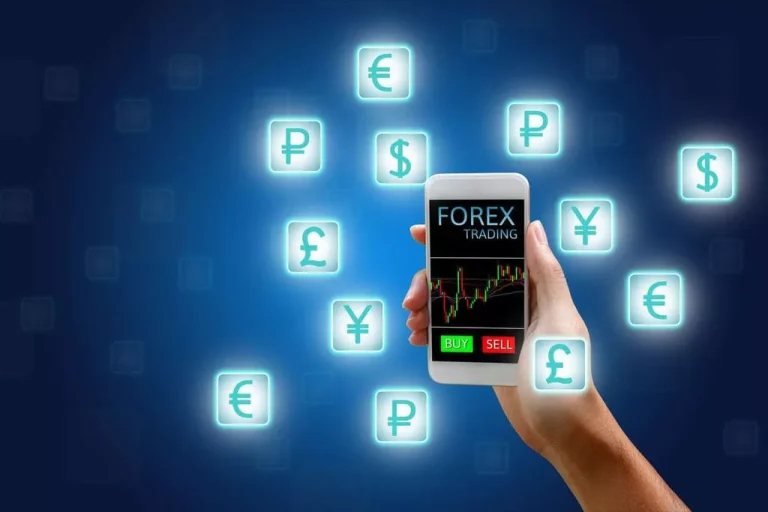Non-Fungible Token NFT: What It Means and How It Works Leave a comment
Content
The targeted attacks came after a major data leak, impacting everyone who has shared their email with OpenSea in the past. Once you’ve purchased the NFT, https://www.xcritical.com/ you will be able to manage it in your digital wallet. When you make an NFT, the content link is baked into the token. If that link goes to IPFS, it’ll be pointing to something that’s more permanent than, say, an image on a regular server. Of course, there have been a few fun experiments in the NFT space (though I’ll admit that at least one of them was poking fun at the concept of NFTs), but… Listen, one of the most successful NFT-based games is kind of a weird version of feudalism, and also got mega-hacked.
- NFTs are designed to represent ownership or proof of authenticity of a specific digital asset, such as a piece of art, music, or even a tweet.
- The targeted attacks came after a major data leak, impacting everyone who has shared their email with OpenSea in the past.
- An NFT can represent any digital creation — art, music, videos, writing, etc.
- However, many ordinary Internet users still have a very vague idea about the concept of NFT.
- NFT owners can also be vulnerable to hackers and phishing scams.
- This is helpful in categories like art, where provenance is such an important part of the collectability of a piece.
What’s the difference between cryptocurrencies and NFTs?
Everything that you need to know to start your own business. NFT owners can also be vulnerable to hackers and phishing scams. Due to the high values of some NFTs, collectors are frequently targeted by cyber thieves. Crypto wallet holders should always protect their passwords and never share their seed or recovery phrase. Cryptocurrency is a digital type of currency that exists only electronically. In this guide, we’ll cover how crypto works and how to create a non-fungible token why it may (or may not) revolutionize finance as we know it.
Learn more about blockchain technology

Since the Proof of personhood artwork is totally digital, buyers, sellers, and traders eventually transact in the metaverse. NFT art also has a single original, just like there is with physical art. Plus, the long-term value and utility of many NFTs remain uncertain, as the technology and market are still evolving. Regulatory risks also exist, as governments may implement new laws or regulations that could impact NFT ownership or trading. Lastly, environmental concerns related to the energy consumption of blockchain networks could potentially affect the public perception and long-term viability of NFTs.
Crossmint partners with Narravero to power Digital Product Passports
They provide a new way to represent property ownership, and the use of NFTs can streamline the real estate buying and selling process. NFTs can also be used to represent fractional ownership, making it possible for people to own a small part of a property. Only two other living artists – Jeff Koons and David Hockney – have had their work sell for a price close to what Beeple’s piece brought. Some experts think artists whose work you can touch will be able to soon use blockchain technology to sell digital versions of their famous art. NFTs are a fascinating evolution of both the blockchain and the market in digital arts and collectibles. Currently, the focus is on multi-million dollar headline sales, but NFTs also create a sustainable economy for artists, writers, videographers, and musicians who struggle to monetize their work.
Explanation of the different types of NFTs
When asked about his artwork selling for such a high price, Beeple called it “crazy.” Since the technology is new, not many people know what the future holds for NFT art. Some may grow in value while others may become worthless, Beeple said. He added that NFTs are giving people another way to invest outside of the stock market. Supporters of NFT technology note that such ownership means the digital artwork truly belongs to the artist, who can then sell it.

For example, if you own an NFT for digital art, you can set the smart contract to pay you a percentage of revenues each time the art is sold to someone else. This allows you to demonstrate that you own a certain digital item, such as a work of art or a collectible, in the digital domain. Further, as we discussed earlier, NFTs employ Blockchain technology. Another factor is the sense of exclusivity and community that NFTs create. Collectors and investors are willing to pay a premium for NFTs because they represent a unique and rare piece of content that only they can own. This creates a sense of belonging to an elite group of owners who share a passion for the same digital asset.
The individual value of any PFP NFT often hinges on trait rarity, leading to a general pricing strategy based on the “floor price”—the price of the least expensive NFT in the collection. A blockchain is a distributed and secured ledger, so issuing NFTs to represent shares serves the same purpose as issuing stocks. The main advantage to using NFTs and blockchain instead of a stock ledger is that smart contracts can automate ownership transferral—once an NFT share is sold, the blockchain can take care of everything else. NFTs are created through a process called minting, in which the asset’s information is encrypted and recorded on a blockchain. At a high level, the minting process entails a new block being created, NFT information being validated by a validator, and the block being closed. This minting process often entails incorporating smart contracts that assign ownership and manage NFT transfers.

If you find yourself holding an NFT you no longer want, it might be difficult to find a buyer if that type is no longer popular. Many blockchains can create NFTs, but they might be called something different. For instance, on the Bitcoin blockchain, they are called Ordinals. Like an Ethereum-based NFT, a Bitcoin Ordinal can be bought, sold, and traded. The difference is Ethereum creates tokens for the asset, while Ordinals have serial numbers (called identifiers) assigned to satoshis—the smallest bitcoin denomination.
You might already know that Blockchain is a secure public ledger to store records. The records stored on a Blockchain are transparent and secure. The concept of NFTs can be traced back to the creation of the first Blockchain-based game, CryptoKitties, in 2017. The game allowed players to collect, breed, and trade virtual cats, each of which was a unique NFT. The Mona Lisa is worth about a billion dollars, but an exact digital copy is worth next to nothing.
NFTs and cryptocurrencies both represent digital ownership and decentralized economics. Fans of these technologies favor the transparency, immutability, and autonomy that these assets represent. Smart contract code is incorporated into the token when it’s created or minted. Stored on blockchain, the smart contract determines the NFT’s qualities, such as ownership and transferability. The most common way to buy an NFT is through an online marketplace. The value of an NFT depends on many factors, including popularity and scarcity.
The algorithm for buying an NFT is much the same as for selling it. You need to create a cryptocurrency wallet, go to the platform that sells NFTs and connect your wallet. You can buy NFTs at a fixed price or participate in an auction.
Those considering buying NFTs should be aware that, like cryptocurrencies, NFTs may be more susceptible to market manipulation than other investments, such as stocks and bonds. The regulatory environment for digital assets is still developing, and NFTs don’t benefit from the same protections as other investments. For example, they are not insured by the Federal Deposit Insurance Corporation or the Securities Investor Protection Corporation. Non-fungible tokens are created using blockchain technology — a decentralized digital system for recording and storing information.
That means a single NFT could provide passive income or new customer leads for years to come. “A new local cookie business could have a grand opening special where the first 100 people to buy an NFT would get a free cookie each week for a year,” wrote Forbes. While NFTs gain popularity, market participants and observers are becoming increasingly aware of the impact that NFTs have on the environment. The use of blockchain generates greenhouse gases, which have a significant effect on the world’s carbon footprint. The NFT buyer hopes the value of the token increases with time, similar to all investments. Just like their fungible cousins, NFTs are subject to shifts in supply and demand.
